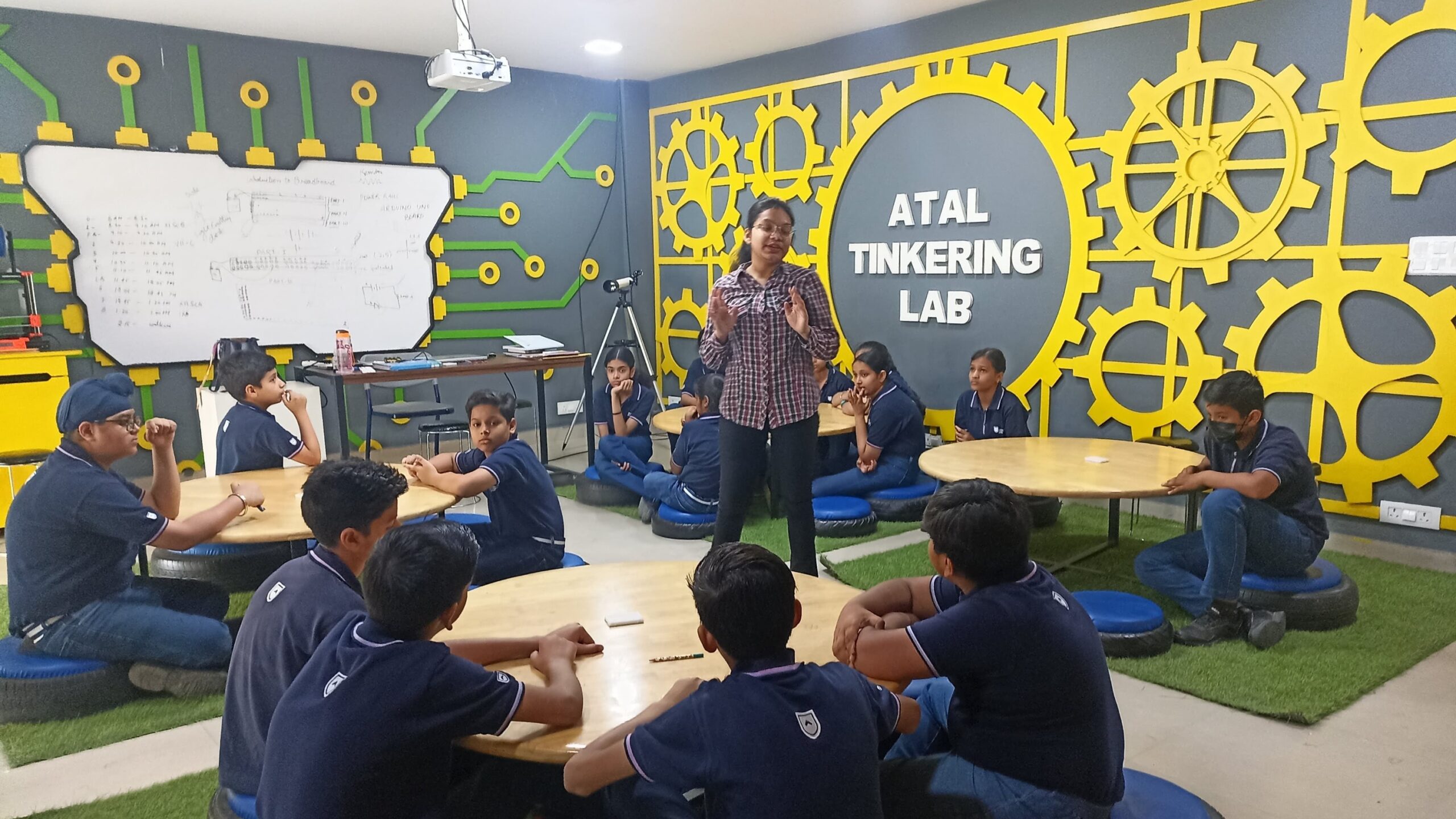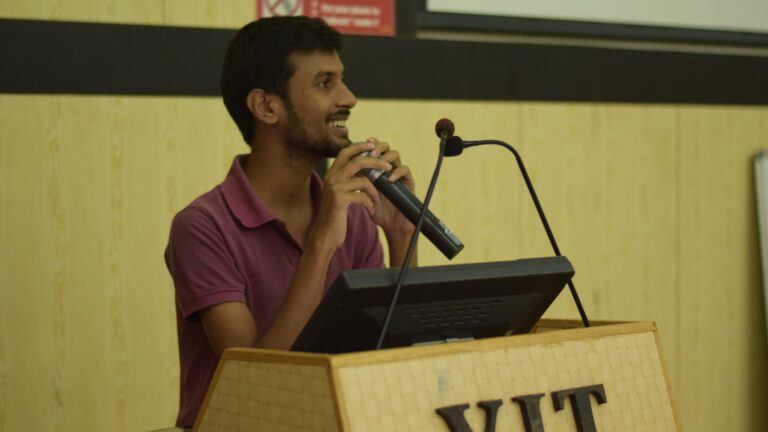In the dynamic realm of STEM education—comprising Science, Technology, Engineering, and Mathematics—Tripti Varshney emerges as a dedicated contributor, playing a pivotal role in shaping the educational landscape in India.
With a diverse background and steadfast commitment, Tripti’s journey reflects her passion for fostering innovation and excellence within the integrated disciplines of STEM.
As we delve into her experiences, her story becomes an inspiring narrative for those navigating the path of innovation. Her impact on the evolving STEM education landscape is marked by the profound dedication that has shaped its trajectory in cultivating innovative thinking among students.
Go ahead and discover what her story has to offer aspiring youth so that you can easily find a path of self-growth.
Can you share a bit about your background and what inspired you to pursue a career in STEM education?
Growing up in an Indian middle-class family, I was surrounded by a culture that valued education and hard work. Being in that environment I focussed on my studies primarily during my senior secondary education years. For my further studies, I went to Delhi University to complete my graduation in Physics, where I explored more paths to grow as a leader. Be it the debating society, theatre society, eco club, or NSS I actively participated in all the events during the early years of my grad.
Later on, my interest grew more in Physics and I was elected as the Vice President of the Physics society of our college. Adding up to this I actively worked for a USA-based photonics society Society of Photoinstrumentation Engineers (SPIE) and it was there my interest in Robotics, Microcontrollers, Microprocessors etc. grew.
The entire journey of learning paused when I started preparing for government job exams. Looking for a safe career plan, I opted to pursue a B.Ed. during my years of preparation. Here I joined a school during my internship as a Physics teacher. During this internship, I was offered to run an Atal Tinkering Laboratory (ATL). That’s how I accidentally landed in the field of STEM education.
You have just mentioned about Atal Tinkering Lab, can you please elaborate on what are these labs and how they function?
Yes, these are basically the innovation labs which are set up by the Government of India in government and private schools under the Atal Innovation Mission (AIM) to ignite curiosity, innovation, and awareness about technology in school students.
How has your experience been working with Atal Tinkering Labs (ATLs)? What unique challenges and opportunities have you encountered?
It has been a great experience to educate young minds about technologies like block coding, working with different sensors, hands-on learning experience with various concepts of science and educating them about microcontrollers and card-sized computers like Raspberry Pie.
Talking about the challenges, it is indeed a difficult task to bind each student’s interest in technology. Sometimes we have to teach circuits in an artistic way to inculcate the students who don’t possess an interest in developing circuits. So, every day in itself is a new opportunity for us to spark and drive the interest of the maximum learners in our lab.
In what ways do you think Atal Tinkering Labs contribute to fostering innovation and creativity among students?
Here in our labs we typically integrate the learnings from all the disciplines that are taught in schools and that’s why the term has been modified to STE(A+)M i.e. Science, Technology, Engineering, Arts and Mathematics education (note- the plus sign stands for further addition of other disciplines).
So the learners apply their concepts learned in the classroom to develop solutions to any of the daily life problems or any other issue related to the environment or any other existing problems that need identification and remedy. This eventually leads to innovation.
Beyond Atal Tinkering Labs, have you worked in other innovation labs? How do these experiences compare?
Yes, recently I have started with another concept of a Maker’s Lab in a school in Faridabad. However, this lab also aims to develop the skills of learners in the same way Atal Tinkering Labs do. One of the differences is this concept of Maker’s Lab(or Maker’s Space) is a privately owned entity and the ATLs are a government initiative in the field of STEM education.
What role do you believe robotics plays in enhancing STEM education, particularly in the Indian context?
This has an enormous impact on our developing country. Our government is focusing on Make in India Program (or giving a strong push to make India a Semiconductor hub) which primarily requires well-educated youth to be a part of the workforce. To harvest that kind of workforce these labs are working as seeds.
How do you approach curriculum development in the context of STEM education, and what role does innovation play in this process?
Curriculum in this field has to be precisely designed as per the needs of different aptitudes and interests of learners. It should be based on problem-solving aptitude, it should ignite an entrepreneurial mindset in them, it should be inquiry-based learning, it should relate to the real world, etc.
In the rapidly evolving field of STEM education, how do you ensure your initiatives remain adaptable to new technologies and trends?
Regularly changing the teaching methods to serve the different needs of our learners remains our main focus while delivering our content.
What do you see as the future of STEM education in India?
The future of STEM education is indeed bright. Let’s look into an example of this: I during my education was first acquainted with microprocessors during my graduation years and now that same thing I am teaching to a 6th grader. So the future of STEM education in our country is very progressive.
Are there specific trends or developments in the STEM field that you believe will significantly influence the direction of education?
The early exposure to the field of technology would eventually lead more students towards pursuing their careers in STEM subjects. Eventually, the retention of students in higher education will also increase.
What message do you have for aspiring professionals looking to ignite curiosity and creativity in students, integrating key skills like design thinking, computational thinking, adaptive learning, and physical computing in their STEM education approach?
These innovation labs aim to change and strengthen the technological future of our country. Anyone who aspires to be a STEM educator has to be patient enough to transfer the complexities of concepts effectively and make them interesting at the same time.
One doesn’t need a strong technological background for this position. One first needs to understand the foundational concept of these labs. All the learners are not excited to dive into technology, keeping in mind the creative aspect of these labs artistic capabilities are also encouraged here. A good understanding of Sensors, Microcontrollers and basic concepts of science would be a good help here.
I am always open to providing guidance to any of the aspiring individuals. You may write to me at varshneyt1210@gmail.com.
We at Young Influx would take this opportunity to thank Tripti for taking a leap of faith and sharing her impeccable story. We are humbled and grateful, your efforts mean a lot to the youth seeking growth and development.
And hello, dear readers, we welcome you to explore the platform with an open mind. Help yourself gain the most out of the experiences and opportunities listed here.
And before you bid us adieu, we would like you to know that you can read more such stories here.




